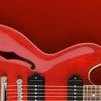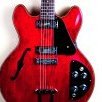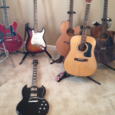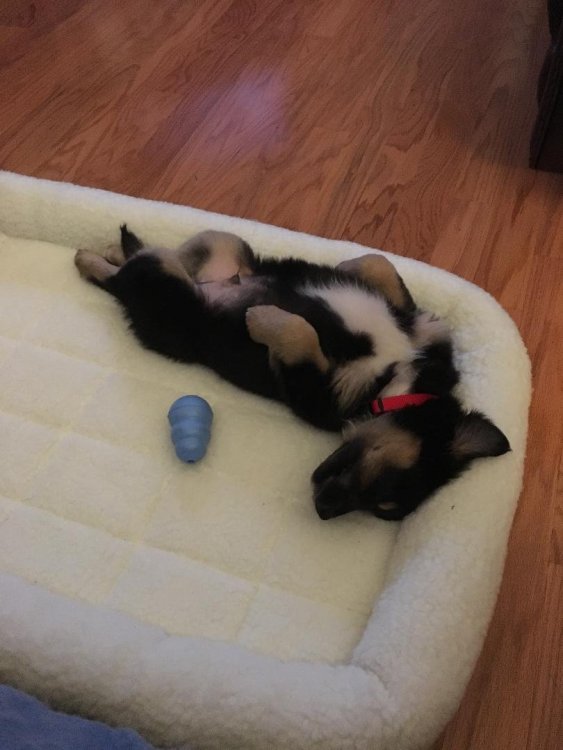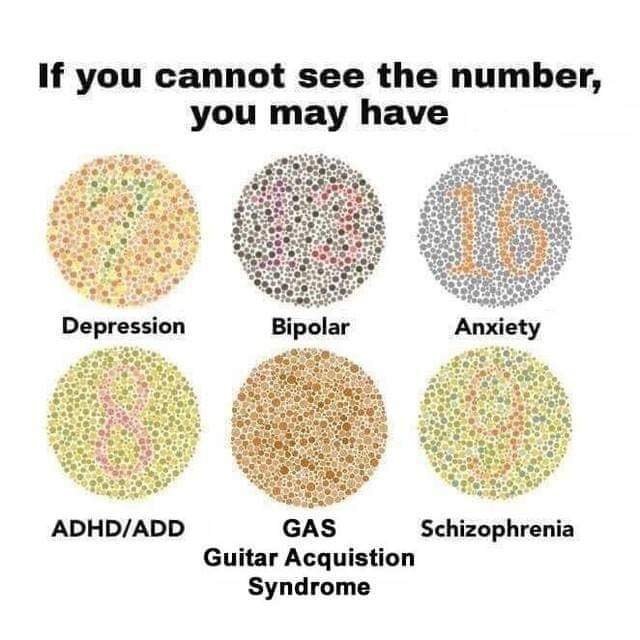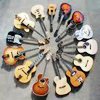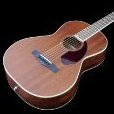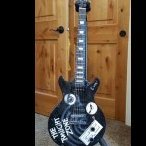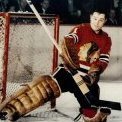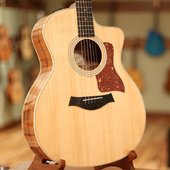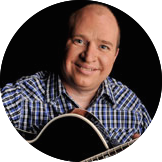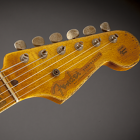Leaderboard
Popular Content
Showing content with the highest reputation on 03/26/2019 in all areas
-
This is mostly my arrangement, but I did borrow a couple of ideas from Steve's recording he posted a year or so ago.5 points
-
3 points
-
Important Medical Public Service Announcement for Guitarists. If, after reviewing this test, you have symptoms do not consult your physician or healthcare provider. I suggest you immediately go to Chicago Music Exchange, your local guitar store, or online at Sweetwater😉😅 ps. I probably don't need to say this, but.......approaching 1700 members from around the world we have many languages and cultures. In case of a language barrier, this is not real. This is a joke. This is absolute bunk.2 points
-
After playing for a while, recording is a natural evolution for a guitarist or any musician really. Let's have a discussion here and share your experience and questions about Recording Gear, DAW's (Digital Audio Workstations), microphones, and recording techniques. We can all learn a lot, and produce music we're proud of!1 point
-
A digital version of the "Lesson Book for Gibson's Learn & Master Guitar " is available for free download in .pdf format The digital version of Bonus Resources BookBonus Workshops Book included in Gibson's Learn & Master Guitar (pdf - very large file) also free download .pdf format. Replacement DVD's and print books for the Learn and Master Guitar course and ALL Learn and Master courses (Blues, Fingerstyle, Song Hits etc.) by Steve Krenz are available from Legacy Learning Systems. Call 866-683-60271 point
-
I recently picked up a Breedlove masterclass Ed Gerhard. Fantastic sounding guitar. It has one issue. The top and bottom strings are easy to push off the fretboard. It has a 1 3/4 nut width so there is plenty of room. Will a new nut with the strings moved slightly inward solve this?1 point
-
Cataract surgery in both eyes came out great. I didn't know the world was so bright and colorful. I complained that it seems as though I often feel some irritable thing in my right eye, and Lo, they looked and informed me that my lower lid has some eye lashes growing backwards. I said that's weird, and they said no, it's quite common and informed me it's some long name I can't pronounce. Still think it's wierd, but next week I go to a specialist who'll pluck them and correct my situation. Talk about medical specialists! But they still can't correct my astigmatism, which means every darn page of sheet music I use has to be enlarged. Even so, they say I don't look like I'm eighty-seven, and I reply "You ought to see the world from my side of the eyeballs!" Lotsa luck. Best, John1 point
-
1 point
-
I would be happy to listen to your bass recordings. Bring them on 😀. Wim1 point
-
1 point
-
1 point
-
1 point
-
1 point
-
John - If I have to get old (and I am well on my way there) - I want to grow old like you. You are one of my guitar heroes! Here's to long life and sagging eyelids!1 point
-
Thanks, all. Visited the eyelash specialist and he said the lower eyelid had sagged due to age. With sagging it turns either out or in. Mine turned in, which he said was fortunate. I don't think so. If I'd been fortunate, the darned lid wouldn't have sagged at all. So, long 'bout the end of April I have to have eyelid surgery, where he insert some suture and string it up like a hammock, so it'll be tight and not sag. Lotsa luck.1 point
-
This was a real fun one to learn and I like the fact that this solo is played all over the neck. It is my final BGU recording. Now that I have learned all these licks, it is time to work on my blues improvisation skills. Thanks for listening, Wim1 point
-
Hello Everyone! Well, after 5 weeks I'm done with session 4 lessons and bonus material - easily the most challenging session yet.. Thank you Steve Krenz!! This course is really working for me so far. You would have to know me to know how hard it as been for me to slow down and be patient with myself. I'm all in with Steve's learning style, and it is paying off for me. It is a constant tradeoff for me - I'm still not entirely happy with my sound, but when I go back and play a session 2 exercise or song I'm pretty stunned at how much sessions 3 and 4 moved me along. Lots of progress and lots still to learn. I'm confident that if I stick with the plan I'll get where I want to be. On one of my earlier attempts at learning guitar (in my 20s), I had a private teacher and I was using William Leavitt's Modern Method For Guitar. I didn't stick with my teacher or with Leavitt. My life and career trumped my guitar, and I was not successful. I found my Leavitt book last year and tried to start going through it. I made it about 10 pages into the book. The problem is that the material gets pretty complex pretty quickly, and I didn't have anyone to shepherd me through it. No knock on Leavitt - it is good material (from Berklee no less), but it definitely requires a patience I've never had and a good teacher to dole it out. I feel like the L&M method is like taking the Leavitt course, but with an accomplished professional musician guiding you. Truth be told, the L&M course is not as technically complex as Leavitt, but is way more practical, and definitely more fun. Bottom line - as a checkpoint, I pulled out my Leavitt book the other night and was able to play some exercises and songs that are pretty far beyond where I've ever been before. I'm working on a duet Etude from the book with a way more experienced guitar buddy of mine. Steve said to celebrate completion of session 4. I bought myself a new guitar strap, and I gave my Taylor a thorough spring cleaning and a new set of strings. And oh, yeah, I'm going to see Pat Metheny here in Knoxville on April 7. To session 5 and beyond!!!1 point
-
@CliffMcCartney, great job finishing session 4 in 5 weeks. As Doug said, many stay in session 4 much longer. I know it took me a lot longer. In fact, that may be near record time. Enjoy the Pat Metheny concert. I would love to see him sometime.1 point
-
Making good progress Many stay in session 4 and 4b much longer. Check my signature area for the link to Words of Guitar Wisdom by Steve. Gives lots of quick thoughts over the years we've had a forum running1 point
-
Try this site at GraphTech: http://www.graphtech.com/products/brands/tusq They have a large selection of nuts with various string spacing's for different sized necks. I have purchased from them without any issues. Henk1 point
-
It is worth a try. If you are unfamiliar with cutting a new nut buy a cheap plastic one and cut that one. If you get it worng then another plastic one will be cheap. When you are happy with the new nut, you then have a template from which to repeat the process with a bone or tusq nut. Sometimes I buy a pre-cut nut that has a fraction narrower string spacing E-E than the one on the guitar at the moment. There are plenty of videos on YouTube to help with showing you how to do the job. To glue to new nut in place just use two small droplets of superglue as it does not soak into the wood.1 point
-
Yes this is where I introduced myself to the Nome on a more consistent basis. I hated it at first but like with everything else in this journey the 3 P's are a virtue. I can say it surely helped me out especially where the rests come in too play.1 point
-
Your on the right track! Great! I confess I didnt use a 'nome for a long time, (I still have to remember to get it going) I think I have pretty good "internal timing" , but using the 'nome recently sharpens up your tempo. A side benefit of using Reaper DAW to practice with, is the Metronome feature, which will play along with you in record or playback mode. I found this challenging yet very helpful to get the timing just right.1 point
-
Yeah swing was a wrong choice of words, but couldn't come up with a 1 2 3 1 2 3 feel1 point
-
1 point
-
Swing? Well... thats a good question. Musicians are always on the hunt for "it" . A common term among Jazz musicians it refers to a "feel" or gut response to the music and the beat. In the case of Minuet in C , a waltz in 3/4 time, ( rythym count 1, 2, 3, 1, 2, 3,)the Swing would mean putting emphasis on beat 1 of each bar, as a dancer would in taking a step. In other forms like jazz , the " swing" comes from emphasis on beats 2 and 4 in 4/4 time, etc. I hope that makes sense.1 point
-
@Funkcanna doing well with Minuet in C.. remember it's a Waltz type of song so it has a bit swing to it 1/4, 1/8-1/8, 1/8-1/8 per measure almost a triplet .. spoken like tr-pl-et,, Well actually, first beat is longer, than the rest; so trp-ll-et as Neil says.. Session 4 is a very good time to break out the metronome .. yeah I rarely use one.. but you'll need it for future recordings once you get the multitrack recordings like the other members put together in the 'Recording Challenge' Section1 point
-
@Funkcanna Great job with Minuet C! @S Bach I suggest using a metronome and tapping your foot to help with the timing issues, rests etc. Try for a flowing melodic line once you get the tune "down" . Eventually you" ll be playing this from memory.1 point
-
I’m sticking with the “when to move on” criteria, which doesn’t mention rests, thankfully but I’m with you on that one. I just try to listen to the actual song and feel the rhythm of the rests at this point. I can’t look at a sheet of music and play it with the correct rests without hearing it first. I’m sure it will come though. If someone told me a month ago I’d be able to read any music whatsoever I’d have called them a liar!1 point
-
I still have a lot of issues with the eighths rests in the bonus workshops string exercises. When I get a new exercise, they always seem to mess me up and knock me out of rhythm. I know I'll get it down with time, but not sure if this will be something I should have down pat by the end of session 4, or it will take a while for them to become second nature.1 point
-
I agree. I went back to earlier lessons and they were a breeze after session 4 and not even attempting the earlier ones for a while. If anyone is interested ive decided to post vids of the sessions. I know it really helped me seeing people play these on youtube. Its definitely far from perfect obviously but I thnk im happy for being 3 weeks into the course (2 of which have been spent solely on session4!!) 100% open to feedback!1 point
-
I'm in session 4 and at times I feel exactly the way you do, but part of me (someone can correct me if I'm thinking about this wrong) doesn't think memorizing some of the exercises is all that bad. By memorizing songs/exercises you are still looking at the notes and associating the correct fingering and tempo and eventually the more exercises you do it will keep building on that past association you have made. You may mess up more at first, but I wasn't long ago I was worried if I was memorizing Yankee Doodle and not reading the music, but I've gotten pretty good (relatively) at recognizing and not getting tripped up by notes on the first 3 strings, so memorizing Yankee Doodle hasn't really hurt me.1 point
-
@Funkcanna Hi glad you're here abd welcome to the Guitar Gathering family?. The LMG course is very comprehensive covering a lot of ground. No need to rush! Take your time, be sure you understand the material and can play and read the notes on the staff accurately before moving on. Use the jam tracks and play along at the prescibed tempo. You are developing skills that you will really need later. Enjoy the trip and let us know how you're doing.1 point
-
Hey guys, I’m currently on session 4 and have been for around 5 days, trying to learn Minuet in C is tougher than expected but I now have it down albeit with a shaky final bar (I’ve not practiced that as much due to me failing to reach that point for the last few days!). I’m hoping another couple of days max and I’ll have covered all of the requirements to move on. Each other session was a day or 2 max so this one has had me worried! But I think I’m over the worst of it. I do have a question though... im not sure how much of this is my ability to read and play what I see on the sheet music, or what I’m just remembering through repetition. Is that ok?1 point
-
Here is the Answer Key to the Learn & Master Guitar Lesson Book (PDF, 111 K, 7 pages). L&M Guitar Lesson Book Answer Key.pdf1 point
-
Here are some tips for Session Four as you begin it... And, here are some tips for Session Four after you've been in it for a while...1 point
-
Getting ready to head into Session 4, some very helpful advice before. What are some thoughts on the best way to split this up? Should I watch the videos and split it up into 5th & 6th String then the Sharps and flat? Or try to get comfortable with the 5th string and don't move to the 6th until somewhat comfortable with 5th string, then so on? Would love to hear what worked best for others.1 point
-
I wrote a blog about Home Recording for the Newbie. I used to record strictly digitally, but now am using and learning more about mic recording. Having a lot of fun with it. I now have an SM57 and an Sennheiser e609 to record my amp, and I love the sound. Here's a link to the blog: https://oldguysguitarblog.com/2018/11/04/home-recording-guitar-for-newbies/1 point
-
I'll add this, I use the PreSonus Audio Box 22vsl and run PreSonus Studio One Producer DAW. I monitor with KRK KNS-8400 headphones. I'm currently researching options for studio monitors. However, my music room isn't treated so that's kind of a concern too. Just this past week I ordered a Two Notes Captor from Sweetwater, let me tell you this thing is amazing. If you have a tube amp, the Captor paired with Two Notes Wall of Sound is a must have for silent recording. I can record my Hot Rod Deluxe at any volume at any time of the day or night. If you know anything about the HRD you'll know their too loud for home recording unless you're home alone. The sweet spot on my HRD is from 2 thru 6, depending on what tone I'm trying to achieve. So my chain is, guitar>pedals>amp>Two Notes Captor>interface/headphones>computer. Harry1 point
-
Ok. This is real good to know. I've always had a hard time with this session. Thought it was just me. Thanks for the info!1 point
-
Words of Wisdom and direction for those studying Session 4 and beyond, by Steve Krenz; Steve has always said Session 4 is really like having two sessions in one. And he encourages members to divide it into 2 parts as you are doing. Here are a few posts from the old forum that contain his words of wisdom: Posted by Steve Krenz on 18 June 2009 - 06:18 AM in Guitar Session 4 (old LMG forum) Well, welcome to Session 4! Session 4 is the last session on learning the notes in the first position. If you can get through it successfully you will have reached the first big milestone in the course. End of Session 4 - Note Reading In the past 4 sessions you will have learned how to read music and how to play the notes on all of the strings in the first position. But don't start celebrating yet. You still have Session 4 to get through. Here are some words of wisdom having walked many people through these concepts. 1) Session 4 is a big session. It's really two major concepts (The Notes on the 5th & 6th Strings and Sharps & Flats) all rolled into one session.Plan on it taking twice as long as the other sessions. I don't mean to discourage you, I'm just keeping it real. There are several "big" sessions in the course ie. Big concepts, longer time involved, bigger payoff at the end... And session 4 is the first of them. Don't get discouraged by this, just relax and continue what you've been doing...climbing day by day, exercise by exercise, skill by skill through the material. 2) Since Session 4 basically has two parts to it, I encourage you to split them up as you practice them. The first part of Session 4 is learning the notes on the 5th and 6th strings. So, initially just worry about those. Don't even worry about the Sharps and Flats part of it at first. As you are learning the notes on the 5th and 6th strings, you'll find yourself back at square 1 again with fumbling for the notes and getting your fingers to land where your brain is telling them to land. You'll go through the phase of feeling like nothing is working, even the notes from the earlier sessions you'll miss for a while, but don't worry about this, this is all normal and everyone goes through this phase. The notes on the 5th and 6th strings are the LAST notes you'll need to conquer for a while. Go through as much of the exercises and Bonus exercises and songs and Hal Leonard Easy Pop Melodies songs as you can... as many times as possible. You're building muscle memory and note recognition which is built by repetition. So do the songs over and over again, and keep doing the old songs. Once you have a pretty good handle on all of the notes in the first position, then start working on the Sharps and Flats alterations to them. This will bring a whole new world of possibilities and challenges. But with practice they will start to come together. These are very important concepts for playing guitar so really dig into learning them. And when you get through Session 4, then take yourself out to dinner, or better yet to the guitar store! Ask questions as you need to. Many people here have gone through the same things that you are going through and they can help you. Keep up the great work! And I'll see you on the other side of Session 4. - Steve Krenz Posted 05 July 2009 - 09:12 PM Matthew, Congratulations on making it to Session 4! You've come a long way and there is nothing that is in Session 4 that is beyond you. It's just a continuation of your learning of the notes in the first position. Yes, it's a big session. (Actually, it's really 2 sessions in one. - the notes on the 5th & 6th strings and sharps & flats.) I encourage you to think of it that way - 2 separate sessions. Focus in on the new notes on the 5th & 6th strings first, before trying to work with the sharps and flats. Also, it is important that you get all of the practice reading that you can. Read the old exercises and songs, Read the Bonus Workshop exercises and songs, Read the Hal Leonard Easy Songs. Read them all. Over and over. Repetition, repetition, repetition will help you. The notes on the 5th and 6th strings are going to be tough for you at first. But let me give you some hope. A few sessions ago you thought that the notes on the earlier strings were impossible. That's how you are going to probably feel about the notes on the 5th & 6th strings. But you will conquer them just like you did the earlier strings. At the end of this session, you will have reached the first major milestone in the course. This session represents the end of the formal working on the first position notes. It's a big deal. You still have a ways to go but you'll get there. Keep up the great work! - Steve Krenz Posted 17 February 2015 - 09:34 AM It's great to hear everyone's progress. Here are some thoughts. SESSION 4 IS REALLY TWO DIFFERENT SESSIONS Session 4 covers two major concepts. 1) The completion of the notes in the first position. 2) And, sharps and flats. Treat them as two completely different sessions. Give Session 4 about twice the amount of time to complete as you've been having on the other sessions. Work on learning the notes on the 5th and 6th strings first. And, go through the exercises and songs that apply in the book and bonus resources book. (The Easy Pop Melodies series is great at this time to give you more songs to practice with. You can see that HERE ) Then, move on to sharps and flats. IT'S NOT A RACE, TAKE THE TIME NEEDED TO LEARN Yes, it's not a race. So, take your time, and really learn the concepts. Yes, it's hard. The songs are harder. Don't take the easy way and just fake your way through them. Invest the time needed to do them as best as you can do them. Start slowly. Break the songs down into pieces and then put the pieces together once you've got them worked out. DON'T DEMAND PERFECTION - IT'S NOT TIME FOR THAT This session is about going through as much material as you can find. It's about solving the problems of what the notes are and where they are over and over and over again in a variety of situations. Think of it like this. If you were learning to drive, you wouldn't train by driving the exact same street every day until you can get it absolutely perfect. You need to be put in lots of different driving situations and get used to working with new elements. That's how it is with learning to play at this stage. You need lots of practice with different musical situations. Don't burden yourself with waiting to move on until every song is perfect. Don't wait for perfection. Do the best you can then keep moving. - Steve And here is another containing Steve's wisdom. I remember him using climbing a mountain as an example. Posted 06 May 2008 - 04:18 PM Hello, Everyone had been talking about how they are camping here at Session 4 so I thought I would carry the analogy along. Let me first welcome you to beautiful Session 4. I'm not going to point out the dangerous parts which you have all found so naturally. Let me take a moment to point out the beautiful things that will get done here at Camp 4. Camp 4 is easily the biggest of the sessions that you have come through. Bigger challenges, Bigger songs, but also bigger payoffs. Let me give you the big picture of your Learn and Master Guitar journey. The first half of the course or so is the "Learn" part of the journey. Let me give you the run down of that part of the course. Session 1 - The Park Entrance Lots of encouragement, introduction to basic skills, first aid station for your fingers. Lots of benches to rest on. Lots of pictures of mountain scenery hanging on the lodge wall. Lots of picture windows of great musical mountain vistas. An air of possibility, expectation and dreams fulfilled. Basic hiking and camping skills introduced. Sessions 2, 3, 4 - Learning Your Notes Now you begin to start climbing. Step after step, exercise after excercise, string after string, skill after skill. It's feels tough at the time and yet occasionally discouraging because you turn around and you can still see the car in the parking lot because you haven't travelled up too far. But by Session 4, you can't see the car anymore, just endless upwards steps and somewhere way up ahead a turn in the path. But what I know, that you may have trouble seeing, is that at the end of Session 4 is your first big milestone and visitors center. The one with the big leather couches, capachino machines, huge picturesque windows with the next summit, and if you turn around you can still see the car in the parking lot but only with binoculars now. Session 4 is the last stand for single notes. After session 4, you have reached your first summit - you've learned all of your notes in the first position. You've learned how to read music, you've learned about sharps and flats. You've learned a few chords along the way as well as a lot about yourself and persevering. There is a big bell in the visitor center between Session 4 and 5 that bedraggled muddied climbers ring in triumph as they come in to rest. On it, reads "I sincerely thought I would never read music but now I can read music. I'm really learning how to play the guitar. I may not be the worlds greatest but I'm definately learning and it feels great - hard but great." The bell rings several times a day. Sessions 5 - 6 - Basic Open Chords As you come out refreshed and revived from the Session 4 milestone you enter a completely different exciting musical world of chords. New things to learn that sound great. No more "Yankee Doodle" songs. You start really sounding like a guitar player. These are generally easier to conquer and very musically fulfilling - A well deserved rest between what you have come through and what is yet to come. Sessions 7 - 8 - Barre Chords The key to getting through these tough climbs is to work hard, take it slow, laugh a lot, and to not get stuck. Perseverance is the key here. Everyone thinks they won't make it through these sessions, but the secret is that everyone who doesn't quit will make it through these sessions if they don't stop. At the end of Session 8 is the second big visitors center. You have conquered the second big summit - Open Chords & Barre Chords & Major Scales & Keys. Everyone at this stage, gets a free shirt that says "I am now a real guitar player." There is lots of music in the visitor center. Guys playing in local jam sessions, or with friends, or at church. A whole world of musical opportunities have now opened up to you and your playing. You try to see back to where you started this journey and can still remember where the car is but you don't want to go back. You're in a new place musically with new possibilities. I hope this gives you some perspective on your journey through the "Learning" part of the Learn and Master Guitar Course. Keep up the great work. Have a smores! - Steve Krenz 1 Nutty11 point
-
Appreciate the feedback and happy to hear I am moving in the right direction. I will try to remember that perfection at this point is little too early....that is due to my ocd...lol...expect to move on to lesson seven early August......will keep you posted on my progress...?1 point
-
Barre cords like F at the 1st fret are hard enough for even the seasoned player so dont sweat it too much right now.... you will need time for your hand muscles to develop. Be sure you're using the correct muscles... dont be afraid to pull the guitar toward yourself using your large muscles and body, not just gripping the daylights out of the neck with your thumb. You could also try barre cords (they are movable) at say the 3rd to 7th fret (G, G#,A,A#,B,C) for practice which are usually easier to fret. Some day soon, you'll be playing barre cords most of the time... clear as a bell. All the Best! Neil1 point
-
Chris, my only advice is don't get them perfect. I probably worked on these two barre chord sessions for at least 9 months. With some retrospection I wish now that I had moved on sooner. You are going to play these the rest of your guitar playing life. They are going to improve as you play. Memorize the 5 shapes for 6th string and 5th string chords. Get them "pretty" good? If you can't get the F7 to ring out perfectly, live with it. If the G7 rings out clearly, you're close.1 point
-
Still working on lesson 5 and the chords are coming along a lot better. began lesson 6 shortly as these 2 lessons seem to work together. Any advice on lesson 6... I tried the first barre chord and can get the E and B string sounding ok but can’t seem to get the G string with my 3rd finger to sound cleanly....are there better exercises that would provide better flexibility to stretch my fingers. Thanks1 point
-
Thanks for advice Neil.....yes as you noted there are really no rules and practice, practice, practice1 point
-
Chris; Certainly some chord changes such as the open G chord when fingered this way using fingers 2, 3 & 4 , make for an easier (and quicker)change to open C, Am, Em, and D chords. Later, having your index finger 1 free allows for hammer on/pull off's of various "colour " notes, or chord melody, especially when playing fingerstyle. Its a good habit to develop. Of course it depends on the chord shape. There are no fixed rules on what finger(s) to use but rather what note makes up the chord played.1 point
-
Thanks for the feedback and still finding my way through the chord changes but enjoying the journey. Wanted to ask if the chord changes are easier for certain chords, when using your pinky as finger number 3, is this a good practice?1 point
-
1 point
-
Steve's Jam Along CD's for Session 5 have three version: Slow, Medium, and Fast. In the course material he doesn't mention any bpm, but if you can play the CD you can get a count of each. As always, Listen to Steve. Lotsa luck.1 point

